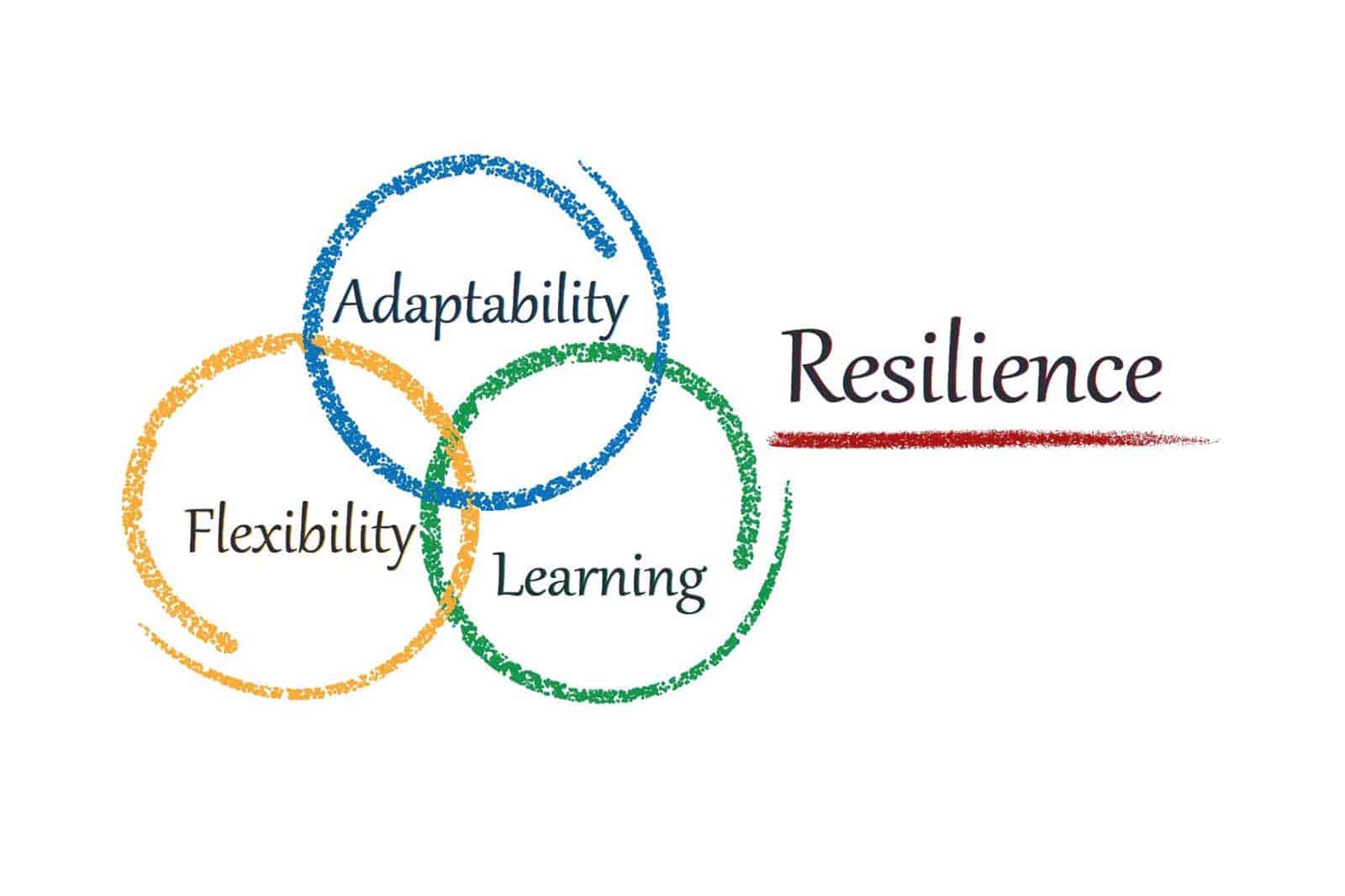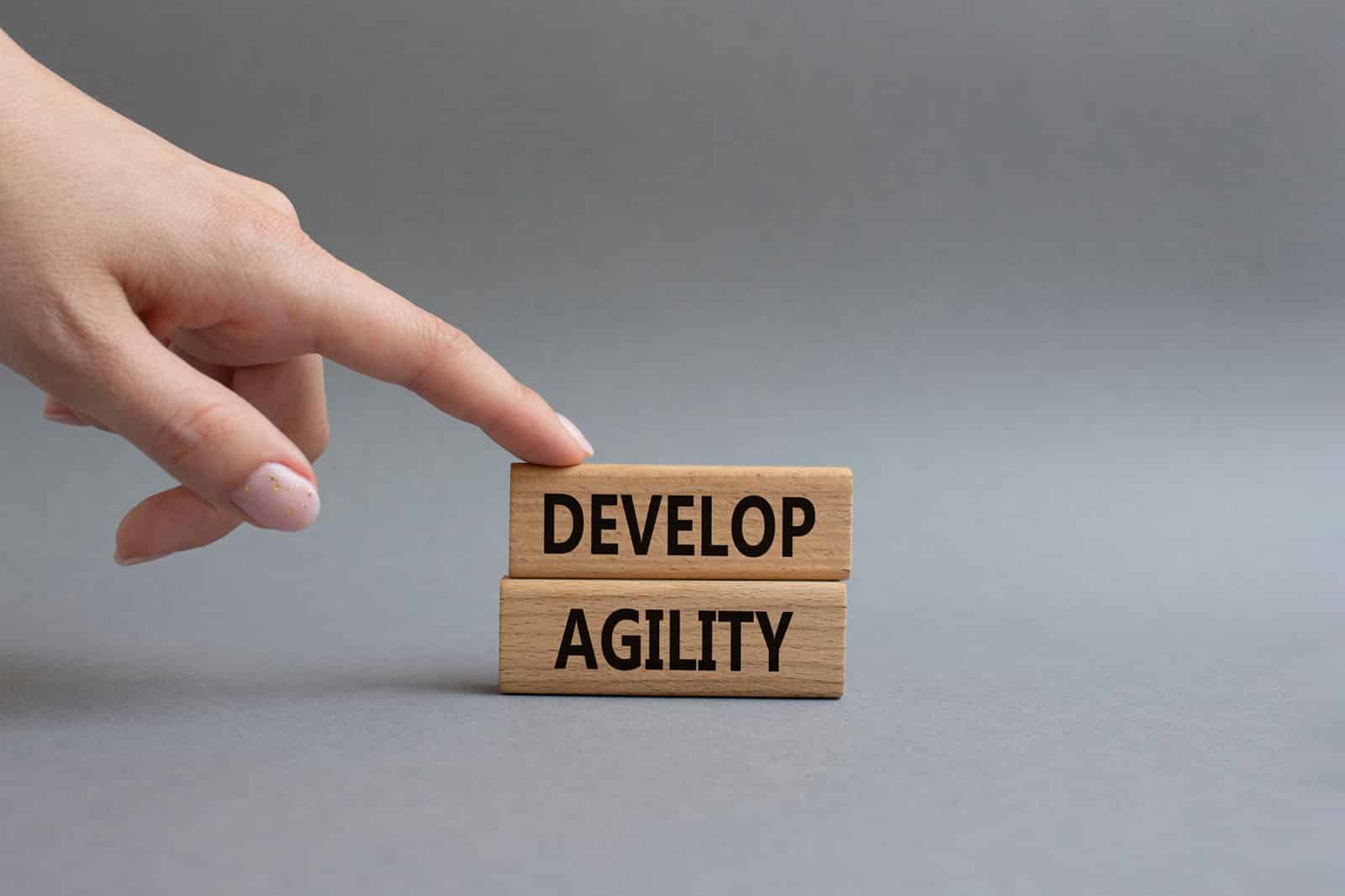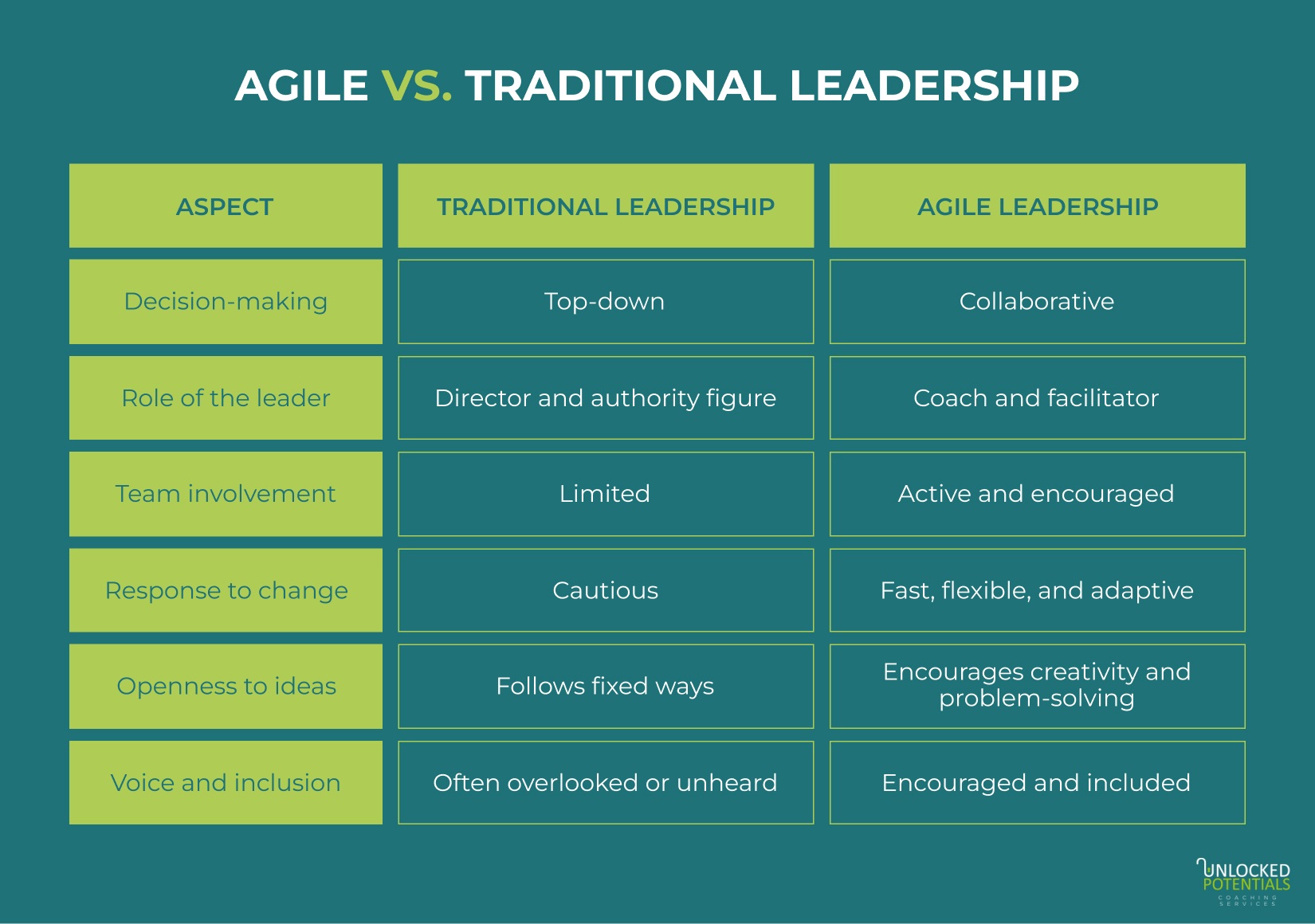What is Agile Leadership: Insights From an Executive Coach

Leadership is the backbone of an organisation, guiding its vision, shaping culture, and driving business growth. It is the instrumental element within human capital management that can make or break employee engagement and overall productivity.
As best said ” A leader is one who knows the way, goes the way, and shows the way.” – John C. Maxwell.
Today, in the fast-paced business world, many leadership styles have come into the limelight, changing perspectives on how an organisation and its workforce should be managed for success. Agile leadership is one such style that is integrated into many organisations today. It began to emerge in the early 2000s as a formal concept, paralleling the rise of agile methodologies in software development.
This article will provide an introductory guide to agile leadership, its framework, benefits, and impact on organisations by gathering insights from an executive coach.
Breaking Down “Agile” and “Leadership”
Understanding what agile leadership has to do starts with breaking down the words and what they mean in general. Here is what each word exactly means and how they combine to deliver a style of leadership which is perceived to be highly effective in today’s fast-paced business world.
Agile
The word “Agile or Agility” is about sensing and responding. Most refer to the word agility as movement, but it has two core definitions:
- The ability to move quickly and easily – This refers to agility in the form of action, which involves the need to be adaptive, responsive, nimble, light on one’s feet, and graceful.
- The ability to think and understand quickly – This meaning refers to agility or movement in the thoughts. It requires the need to be sharp, aware, focused, alert, and perceptive.
It is by combining these two contexts that the true form of agility in a leadership or human capital management scenario takes flight, i.e., having a super capacity to sense and respond at a moment’s notice.
Leadership
The truth is that the study of leadership, especially in an organisational context, is a deep area of study that is a combination of style, personality, character, and skills. This also closely aligns with the most debatable quote: “Leaders are not made, they are born”.
However, in simple terms, leadership is the ability to influence others toward achieving common goals. Unlike many who believe it is not confined to a title or position, in its originality, leadership is about the impact someone has on their environment and others within it.
The challenge is ensuring successful leadership, especially in an organisation, and human capital management comes in the many ways people choose to influence their subordinates.
What is Agile Leadership?
Now that the two words are broken down, it is quite simple to understand agile leadership. Combining the characteristics of agile leadership introduces “Agile leadership.” It represents a leadership style that values adaptability and flexibility. It mainly empowers the organisation and its employees to adjust to unexpected changes that have a potential impact on business growth, like market conditions, emerging technologies, and more.
The concept of agile leadership style is a result of agile product management, which is a process many software developers execute to build products in uncertain and dynamic environments. Since then, they have been applied across various industries and organizational functions.
In other words, agile leadership is a style that emphasizes flexibility, collaboration, and a focus on delivering value quickly and efficiently. The end goal of this leadership style is to create adaptive, responsive, and dynamic environments where teams can thrive and innovate, promoting productivity and overall business growth.
Benefits of Agile Leadership
The saying “Change is the only thing that doesn’t change” seems to be more applicable now in today’s business dynamics. It is quite evident that in business, what trends or is in high demand can experience a sharp decline tomorrow or even the next minute, due to many external factors. This also has a high influence from the increased use of social media and easy access to information within a few clicks.
This has significantly challenged and redefined the traditional paradigms of leading and are being challenged and redefined. It would not be wrong to say that technological advancements are not only distracting the tech space, but also the entire business markets and economies. These changes force businesses to change at a quickening pace. There are very few unchanging markets where companies can maintain the status quo.
Embracing this new market dynamics requires leaders who can navigate uncertainty, complexity, and rapid unforeseen changes. It needs leaders who don’t resist change or are lost at the thought of making changes possible for business growth. This also calls for the ability to see, sense, and respond to changes to stay ahead of competitors and sustain in the market.
This is where the need for agile leadership comes in. Agile leaders are those who can carefully assess and navigate the complexities and uncertainties (or fog) in their organisations and market conditions and have the clarity to understand where they should be heading. They have the know-how and courage to step into the void of uncertainty and the changes it requires and, at the same time, inspire others in the organisation to move in the right direction with a high level of adaptiveness.
Anyone trying to understand what is agile leadership should also keep in mind that some employees prefer a workplace that is more flexible to changes and consider it more important than an attractive salary.
On the other hand, working under agile leadership promotes ongoing learning, as the culture strives to figure out innovative ways to respond and embrace change in a way that benefits business growth. Also, because agile leadership focuses on short-term goals that respond to sudden changes or challenges, it allows a greater sense of transparency and communication in the organisation alongside optimised workflows.
Core Principles of Agile Leadership
The 3 C’s of Agile Leadership
There are 3Cs that are fundamental to carrying out a successful agile leadership, they are:
- Clarity: This represents the ability to provide clear direction and purpose, ensuring everyone understands the organization’s vision and goals.
- Communication: This covers the need to foster open, transparent, and frequent communication to facilitate feedback and informed decision-making.
- Collaboration: This element focuses on teamwork and cross-functional cooperation, removing barriers to enhance creativity and problem-solving.
Following these three C’s is essential in repeating the full potential of agile leadership towards business growth and overall successful human capital management.
9 Principles of Agile Leadership
Principle 1 – Actions Speak Louder Than Words
Agile leadership is not just about accepting change, it is also about being the change, i.e. Showing through actions and leading by example on how to embrace change the right way. It is about inspiring subordinates in the organisation. It is about working on yourself as a leader first and letting your actions provide a source of guide for the subordinates and juniors to follow.
Principle 2 – Improved Quality of Thinking Leads to Improved Outcomes
A successful agile leader will always base their thoughts and decisions towards those that result in meaningful action. Agile leadership is about thinking outside the box to a specific problem and ensuring it is in touch with reality and on par with SMART goals. This also means allowing thinking time and focusing on the highest priorities at any given time.
Principle 3 – Organisations Improve Through Effective Feedback
Agile leaders know how to take constructive feedback and act on it. They have the capacity to courageously solicit meaningful, useful, and timely feedback from peers and other colleagues. Responding to these suggestions timelymanner is also necessary to close the feedback loop.
Principle 4 – People Require Meaning And Purpose To Make Work Fulfilling
A good adaptation towards the agile leadership style should focus on building and sharing a common understanding and purpose. It reflects a meaningful vision of change that brings some positive impact to the organisation and business growth in general.
Principle 5 – Emotion Is A Foundation To Enhanced Creativity And Innovation
A good agile leader will always bring their best selves to work in a way that inspires the rest. Agile leadership is about understanding the importance of acknowledging emotions, which are part of the human experience itself. It is about making subordinates believe that working with emotions can help them achieve more with their potential, giving them more freedom for creativity and innovation.
Principle 6 – Leadership Lives Everywhere In The Organisation
To successfully execute agile leadership, it is important to permeate all aspects of an organisation or change initiative. Most importantly, this applies to human capital management. Take employees out of their comfort zone and be open to accepting change. Mentoring tomorrow’s leaders in the principles and practices of servant leadership sows the seeds for the agile culture to thrive.
Principle 7 – Leaders Devolve Appropriate Power And Authority
Agile leaders should know how to assess people who give their best when they are enabled, engaged and energised. Empowering individuals and delegating responsibilities towards navigating change is a necessary skill for following effective agile leadership. It is a key characteristic agile leaders should have to balance the merging needs and tensions of the organisation.
Principle 8 – Collaborative Communities Achieve More Than Individuals
Building strong communities based on trust, respect, and meaningful working relationships is a meaningful outcome of agile leadership. One of the primary roles of an agile leader is to provide everything that is needed for their subordinates and immediate community to operate at their potential and let them function autonomously within their boundaries. Principles like forgiveness, positivity, generosity, and gratitude are important for a healthy working culture. This also includes the preservation of psychological safety and encourages continuous learning and development.
Principle 9 – Great Ideas Can Come From Anywhere In The Organisation
As a good agile leader, it is important to know and embrace the fact that people who are close to a problem usually have the best ideas about how to solve it. This means democracy is key to this leadership style. Eleven, if not all, inputs will be used in the face of accepting change, agile leaders encourage a continuous flow of creativity by helping people to understand which ideas were useful and which were not.
Difference between Agile and Traditional Leadership
Leadership shapes how a team works and how people handle change. Over time, two main styles have stood out: traditional leadership and agile leadership. Both have their uses, but they take very different paths when it comes to control and change.
-
Command-and-Control vs. Empower-and-Adapt
Traditional leadership often follows a command-and-control style. Decisions are made at the top, and instructions are passed down for others to follow. There’s a clear chain of command. This might feel safe or structured, but it can also limit creativity and slow things down. People may feel they don’t have a voice, even if they’re close to the work or have valuable insights.
Agile leadership is different. It focuses on empowerment and adaptability. Leaders here still provide guidance, but they also trust their teams to take ownership. Instead of holding all the answers, agile leaders ask the right questions. They encourage input from across the team and support people in finding their own solutions.
-
Speed of Decision-Making and Change Adoption
In traditional models, decisions often take time. Layers of approval, formal meetings, and fixed processes slow things down. In fast-changing markets, this can become a risk. By the time a decision is made, the situation may already have changed.
Agile leadership takes a more responsive approach. It doesn’t skip thinking things through, but it values speed and learning over waiting for the “perfect” plan. When something changes, an agile leader can respond quickly. They involve the right people, make decisions, and adjust as they go.
The Human Side of Agile Leadership
Agile leadership is not only about systems, goals, and speed. At its core, it’s about people and how we lead others and ourselves. This is especially important in workplaces where change is constant and people are looking for support.
Unlike traditional leadership, which often centres on control and direction, agile leadership encourages trust, support, and shared responsibility. Agile leaders act more like guides than managers. They don’t have to hold all the answers.
One of the most important roles of an agile leader is building trust and emotional safety within a team. This means creating an environment where people feel safe to speak or make mistakes without fear of judgment.
Agile leadership also brings together two important skills: clarity and flexibility. Teams need clear goals to stay focused. But they also need to be able to adapt when things change because plans often do. Agile leaders help their teams hold both: staying grounded in the purpose while adjusting the path when needed.
To put it simply, agile leaders bring the human side to the front by:
- Leading with trust and support
- Creating emotional safety so everyone feels heard
- Balancing clear goals with space to adapt
- Encouraging steady growth instead of expecting perfection
- Making room for all voices, especially those often overlooked
Building Agile Organisations
Agile leadership works best when it’s supported by an agile culture. It’s not just about how one person leads, but how the whole organisation operates. When leaders, teams, and systems are aligned, change becomes easier to manage, and people feel more connected to their work.
Creating this kind of culture matters for everyone, especially for women in leadership, or those rising into leadership roles. Agile organisations tend to be more open, flexible, and inclusive. That kind of environment helps all voices be heard and gives more people the chance to grow and lead.
Traits of Agile Cultures
An agile culture is built on trust, learning, and teamwork. It helps people work better together and respond to change without stress or confusion. Below are some of the most common traits you’ll find in an agile organisation:
- Purpose-driven
- Open and transparent
- Flexible and adaptable
- Feedback-focused
- Growth-minded
Practical Tips for HR and Executives
For organisations that want to become more agile, the shift often starts with leadership and HR. Below are a few simple but effective ways to start building an agile workplace:
- Support leaders to lead differently: Offer coaching and development to help managers move from giving orders to guiding teams.
- Review how decisions are made: Check if people feel they can give input or share concerns. If decision-making is always top-down, look for safe ways to include more voices.
- Create feedback loops: Build time into regular meetings or check-ins for people to reflect and share feedback.
- Encourage cross-team work: Let people work with others outside their own team.
- Make learning part of the culture: Offer short, focused learning sessions, peer mentoring, or knowledge-sharing events.
- Focus on progress, not perfection: Remind teams it’s okay to try, adjust, and try again.
How to Start Your Agile Leadership
The first step is to understand what agile leadership means in your context. Every organisation and every team is different. Think about your environment. What challenges do you face? What kind of support do your people need? And how open is your current way of working to change and new ideas? These questions help you see where agile leadership can make the most impact.
From there, take time to reflect on your own leadership style. You might ask yourself:
- Do I listen as much as I speak?
- Do I encourage others to take the lead?
- How do I respond when plans change?
- Do people feel safe sharing ideas with me?
- Am I learning and improving as I go?
Being an agile leader means not having all the answers, but being open to learning from others. It means having faith in your team and encouraging others to do their best work. This might feel right to women. It gives you room to lead in a way that is strong, careful, and confident, but also humble.
Getting help as you learn these skills is also useful. You could do this by taking a leadership course, learning from other agile leaders, or working with a coach who can help you through the process. In particular, coaching gives you a safe place to find your own leadership style and learn how to deal with problems in a calm and clear way.
Agile leadership begins with one decision: to lead differently, with people at the centre.
Make The Change The Right Way
While the debate over whether “leaders are born or made” continues, it’s clear that effective leadership requires both inherent qualities and developed skills. The first step to great leadership starts by understanding an organisation’s context, culture, and employees. An executive coach can provide personalised guidance, help leaders navigate challenges, and foster the development of essential skills, ensuring they are well equipped to lead their teams effectively.
Frequently Asked Questions
What does agile leadership really mean?
Agile leadership is a way of leading that focuses on flexibility, trust, and people. It means being able to guide a team through change without needing all the answers up front. Instead of controlling every step, agile leaders support their teams to make decisions, solve problems, and adjust quickly.
How do I know if I’m practising agile leadership?
If you’re:
- encouraging your team to speak up and share ideas,
- adapting your plans when situations change,
- supporting others to lead without always giving orders, and
- focusing on learning and not just results.
What are the five levels of agile leadership development?
- Aware
- Active
- Adaptive
- Influential
- Systemic
What makes someone an agile leader?
Agile leaders tend to share some key characteristics:
- They listen well and stay curious.
- They welcome change rather than resist it.
- They support others to lead, not just follow.
- They focus on learning from experience.
- They lead with purpose, not on pressure.
Is agile leadership only for tech companies or start-ups?
No. While agile ideas started in software development, the approach now works across many industries, from healthcare and education to retail and government. In the UAE, agile leadership is increasingly used in large companies and smaller teams. It’s especially useful in sectors that face rapid change or need to respond quickly to client needs.
- September 2025
- August 2025
- July 2025
- June 2025
- May 2025
- April 2025
- March 2025
- February 2025
- January 2025
- December 2024
- November 2024
- October 2024
- September 2024
- August 2024
- July 2024
- June 2024
- May 2024
- December 2023
- November 2023
- August 2023
- July 2023
- June 2023
- May 2023
- April 2023
- March 2023
- February 2023
- January 2023
- December 2022
- November 2022
- October 2022
- September 2022
- August 2022
- July 2022
- June 2022
- May 2022
- April 2022
- March 2022
- February 2022
- January 2022
- December 2021
- November 2021
- October 2021
- September 2021
- August 2021
- July 2021
- June 2021
- May 2021
- April 2021
- March 2020
- February 2020
- January 2020
- December 2019
- November 2019
- October 2019
- September 2019
- August 2019
- July 2019
- June 2019
- May 2019
- April 2019
- March 2019
- February 2019
- January 2019
- December 2018
- November 2018
- October 2018
- September 2018
- August 2018
- July 2015
- May 2014










